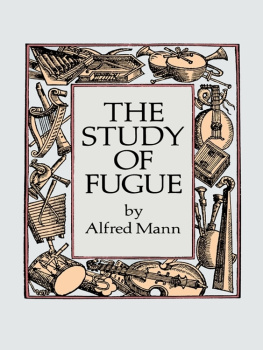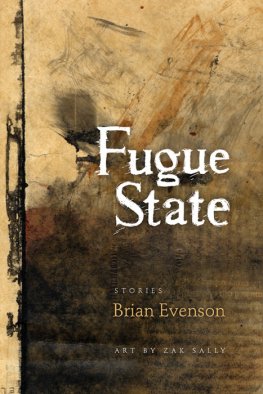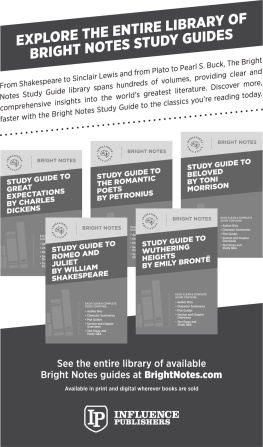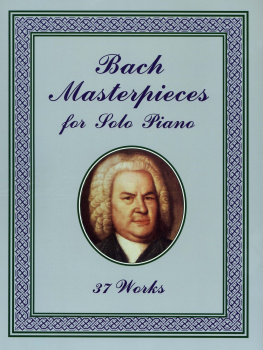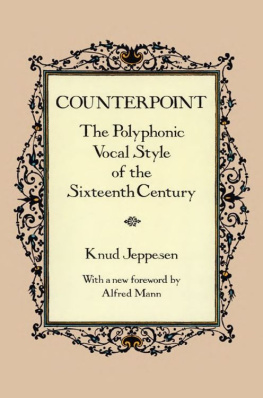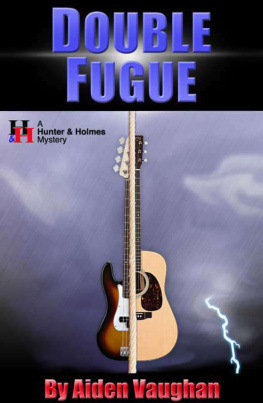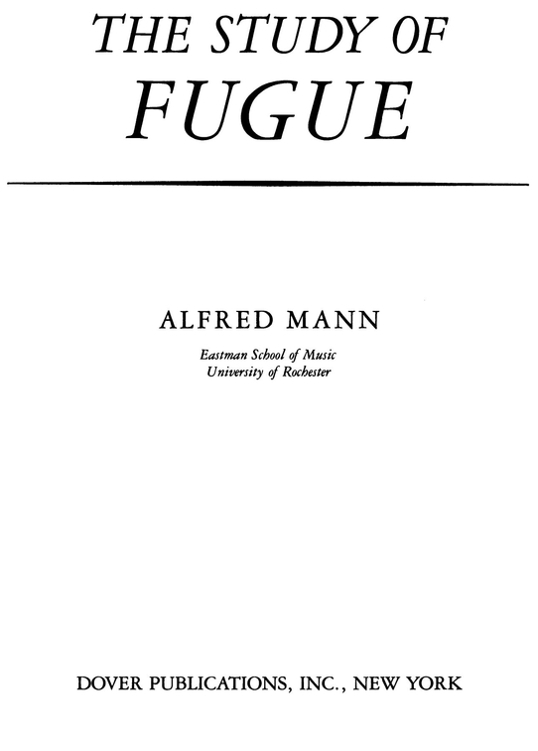
Text copyright 1958 by Rutgers, The State University; copyright renewed
1986 by Alfred Mann.
Preface to the Paperback Edition [1965] copyright 1965 by Alfred Mann.
Preface to the Dover Edition copyright 1987 by Alfred Mann.
All rights reserved.
This Dover edition, first published in 1987, is a slightly enlarged and corrected republication of the work originally published by Rutgers University Press, New Brunswick, N.J., in 1958. In addition to the preface to the original edition, the present edition includes the preface written by the author for the 1965 paperbound edition published by W. W. Norton & Company, Inc., N.Y., and a new Preface to the Dover Edition and brief biography of the author. The present edition is published by special arrangement with Rutgers University Press, 109 Church Street, New Brunswick, N.J. 08901.
Library of Congress Cataloging-in-Publication Data
Mann, Alfred, 1917
The study of fugue.
Reprint. Originally published: New York: Norton, 1965. With new note.
Bibliography: p.
Includes index.
1. Fugue. I. Title.
ML448.M25 1987 781.42 87-6663
9780486171340
Manufactured in the United States by Courier Corporation
25439909
www.doverpublications.com
Fugue is an adornment of music governed by no other principles than those of good taste. The general rules given here can therefore never in themselves lead to the perfection of fugal art.
Jean Philippe Rameau,
Preface to the Dover Edition
(1987)
Having gone through another hardcover printing since the paperback editions of 1965 were issued in the United States and Canada, The Study of Fugue is now given a new lease on life through a Dover Publications paperback reprintdoubly gratifying to the author because, as in 1965, he can report to the readers of the book new results of inquiry into the history of fugal teaching. A facsimile edition of Fuxs Gradus ad Parnassum published in 1967 as Series VII, Volume I, of Jobann Joseph Fux: Smtliche Werke contains Haydns comments on Fuxs fugal teaching; and Series VIII, Volume 2, of the Neue Scbubert-Ausgabe, published in 1986, includes the full documentation of the historic lesson in fuguelong believed lost, but rediscovered in 1968that concluded Schuberts lifework. The evidence that has thus come to light once again guides the student of fugue from theory to practicewhich was the original purpose of the book.
Several footnotes in the text refer to the authors translation of Fuxs Gradus as Steps to Parnassus: The Study of Counterpoint, a title that was changed in 1965 to The Study of Counterpoint: From Johann Joseph Fuxs Gradus ad Parnassum.
A. M.
Table of Contents
Preface to the Paperback Edition
(1965)
The first edition of the Study of Fugue was published in the United States in 1958 and was issued a year later under an English imprint. Two didactic works have since come to light that are of such importance to the historical account of fugal instruction that they should be brought to the attention of the reader of the present edition.
In December 1959 the late Erich Hertzmann, Professor of Musicology at Columbia University, presented a paper before the American Musicological Society in which he described the studies that the English organist and composer Thomas Attwood pursued under the guidance of Mozart from 1785 to 1787. The paper was published under the title Mozart and Attwood in Vol. XII, Nos. 23 of the Journal of the American Musicological Society. Publication of the entire volume containing the exercises written by Attwood and the assignments, notes, and corrections entered by Mozart was planned within the Complete Works of Mozart (Neue Mozart-Ausgabe) under the joint editorship of Cecil B. Oldman, the owner of the manuscript, and Prof. Hertzmann. After the death of Prof. Hertzmann in 1963, preparations for publication were completed by Daniel Heartz and the present writer, and the volume is in press. The discussion of counterpoint and fugue included in the Attwood papers is based to a large extent upon Fuxs Gradus ad Parnassum, and Mozarts interpretation of Fuxs instruction represents a hitherto unknown chapter of singular interest in the history of contrapuntal teaching.
The other work is formed by a group of Handel autographs preserved in the Fitzwilliam Museum in Cambridge, which the present writer discussed at the international musicological congress in Kassel in the fall of 1962 and which until that time had not been recognized as a course of instruction (Hndels Fugenlehreein unverffent-lichtes Manuskript published in Kongress-Bericht Kassel 1962 of the Gesellschaft fr Musikforschung). The manuscript, probably first compiled by Handel in the 1720s for his pupil Princess Anne, daughter of George II, is more fully described in the Hndel-Jabrbuch 1964/65 and will be published as a volume of the Complete Works of Handel (Hallische Hndel-Ausgabe). Handels study of fugue leads from short examples of various imitative procedures (real and fugal answer, augmentation, diminution, stretto, and double exposition) to assignments and models for extended fugal structures. The most interesting portion of the manuscript is Handels treatment of double fugue, which bears out the key position of his fugal writing between the stylistic trends of two eras briefly suggested on page 68, below.
In both cases, the manuscripts show direct connections to the masters own works. The Attwood studies contain copies of canons by Mozart, among them K. 507, 508, 508a, 515b, and a reference to the parody of an academic fugal exposition in the finale of K. 522 (Ein musikalischer Spass). The Fitzwilliam autographs are in several instances related to portions from Handels Harpsichord Lessons of 1720, the Foundling Hospital Anthem, Samson, and Messiah. Thus the student of fugue will find new sets of classical examples that enhance the significance of the instructive material they illustrate.
A. M.
Preface
(1958)
The term fugue holds a particular fascination for the student of music. It suggests the essence of polyphony, the most intricate expression of the complex language of Western music. Where did it originate, what is its true meaning?
As a rule, we associate this concept with the music of Bach, and we are apt to assume that several generations prepared the ground for what in his work became a final form not essentially changed since. In reality, it assumed an important role more than four hundred years earlier. These centuries of fugal history have been inadequately treated in our retrospective view. They have been crowded into a pre-Bach era, and although we have begun to discover their contrapuntal wealth, we are hesitant to recognize their claim to the fugue proper.
Curiously, the name Bach has symbolized not only the beginning and end but also the perfection and imperfection of fugal art. We shall see that his fugal writing, cherished as the supreme model, has nevertheless been denounced as contrary to the rules. Theory and practice have fought bitterly. There is probably no branch of musical composition in which theory is more widely, one might almost say hopelessly, at variance with practice, wrote the English theorist Ebenezer Prout in one of the last comprehensive textbooks on fugue (1891).
This divergence between theory and practice did not exist in earlier periods. The domains of teacher and composer, of didactic and creative thought, were joined rather than opposed. Theoretical works of lasting importance were published by such composers as Praetorius and Rameau, and such works as Bachs Art of Fugue and Schtzs Geistliche Chormusik were meant to serve for the instruction of the student of composition.
Next page
